- Home
- Chuck Palahniuk
Fugatives & Refugees Page 2
Fugatives & Refugees Read online
Page 2
The Witch House: Either the Simon Benson house (recently restored and moved to the Portland State University campus on the South Park Blocks), or the David Cole mansion at 1441 N McClellan Street, where an old woman used to sit in the tower's cupola watching local kids, or the Stone House, built as a park structure by Italian masons on Baltch Creek under the Thurman Street Bridge.
(a postcard from 1981)
Acid and LSD are the same thing. I'm only telling you this because I didn't know it.
This year, I'm nineteen years old and living in a rented room on the second floor at 2221 NW Flanders Street. The Hampton Court Apartments. My friends and I, we buy our jeans at the Squire Shop on SW Broadway and Alder Street. We wear high-waisted, buckle-back carpenter pants with a loop midway down the thigh, so you can hook a hammer there. The Squire Shop has the white-denim painter pants and the striped engineer jeans. We listen to the Flying Lizards and Pink Floyd.
In high school I'd watched a spooky movie called Focus on Acid. Acid could make you mistake the gas name on a stove for a lovely blue carnation. You'd have flashbacks years later and wreck your car.
Still, when some friends suggested eating a tab of LSD and watching the Pink Floyd laser light show at the OMSI (Oregon Museum of Science and Industry) planetarium, I said sure. Let's go.
LSD was lysergic acid diethylamide. A simple alkaloid. Just another chemical. It was science.
This was December, when OMSI used to be in the West Hills, high above the city near the zoo. We sat in the cold parking lot at dusk and each ate a little paper stamp impregnated with LSD, and my friends told me what to expect. First, we'd laugh a lot. We'd smile so long and hard our face muscles would ache for days. Then, we'd grind our teeth. This was important to know so you didn't wear down your molars. My friends talked about how each light and color would bleed a little comet trail. The paint would seem to run down the walls. First, we'd watch the laser light show, then we'd wander through the West Hills mansions and trip on the Christmas lights.
In the OMSI planetarium the seats are in circles around the projector in the center of the round room. My friends sit on one side of me. A woman I don't know sits on my other side. Pink Floyd blares out of speakers and red laser squiggles around the dark, domed ceiling, and I'm laughing so hard I can't stop. They play "Dark Side of the Moon," and my jaws start to ache. They play "The Wall," and the friend on my left side says, "Put something in your mouth." He says, "You're going to wreck your teeth."
He's right, my back teeth feel hot and there's that burned-metal taste you get having a cavity drilled. I'm grinding my teeth that hard.
This is December, so we're wearing denim jackets with fake sheepskin lining. Stocking caps and thick, knitted mufflers. With my muffler stuffed in my mouth, I go back to chewing.
The next thing I know, I'm choking. My throat is full of something soft and dry. I'm gagging, and my mouth is stuffed with something chewy and matted. Some kind of fibers. Or hairs.
In the dark, the laser squiggling and Pink Floyd blasting, my muffler doesn't feel right. It's too soft, and I'm spitting and picking bits of animal fur out of my mouth. If it's mink or rabbit, I don't know, but this is fur.
The woman who sat down next to me, she was wearing a fur coat and dropped it into her seat. She dropped it so one sleeve fell across my lap. That's what I've put in my mouth, and here in the dark, I've chewed, gnawed, gobbled up everything between the elbow and the cuff.
Now my friends are trying to pass me some cleaning solvent poured on a bandanna. To huff. It stinks like dirty socks, and people sitting around us are starting to gripe about the smell.
At any minute the lasers and the music will stop. The lights will come up, and people will get to their feet. They'll slip into their hats and gloves. And the stranger beside me will find a drooly mess where her coat sleeve used to be. Me, I'll be sitting here with wet fur all around my mouth. Strands of fur still stuck between my teeth. Coughing up a mink hair ball.
My friends are elbowing me, still trying to pass me the stinking bandanna soaked in solvent. Carbon tetrachloride, another simple chemical. And the fur coat woman on my other side says, "Christ, what is that smell?"
As the last song ends, before the lights come on, I stand. I tell my friends we're going. Now. I'm shoving them out into the aisle. As the lights come up, I'm climbing over them, telling them, "Run. Don't ask questions, just get outside."
Of course, they think this is a game. So we're running. Outside the fire exit doors, the acres of parking lot are dark, and it's started to snow.
With the snow falling in fat clumps around us, we're running. Through Washington Park at night. Past the zoo and the Christmas lights on the big mansions, each spot of color smearing. Trailing. We're running through the rose garden, the downtown stretched out below. And my friends are laughing. Their fingers and faces stinking of chemical solvent, they run through the falling snow, not thinking this is anything but fun.
Quests: Adventures to Hunt Down
Each of the following is a real trip—minus the risk of flashbacks. Make the effort and live a few hours in somebody else's world. Here are fourteen local outings that prove no way do we all live in the same reality.
I. The Self-Cleaning House
The sign on the gate says do not step on the poison ivy or feed the bull and it's not kidding. That, and the Great Dane, Molly, will rip out your throat.
This is the world-famous Self-Cleaning House, designed and built by Frances Gabe, an artist, an inventor, and a great storyteller. Here in her house the walls are concrete block, with entire walls made of special blocks mortared sideways so the hollow cores form little windows. Sealed on both sides with Plexiglas, the windows hold small knickknacks you never have to dust.
Some open blocks in the wall are glazed with amber glass, giving the rooms a golden honeycomb light. A beehive feeling. "The light ought to go from one side of the house to the other," Frances says, "clear through."
One door is a solid slab of casting resin with slices of bark sealed inside. Frances was so in love with the red-purple color of the local poison oak, she tried to mix paints to match it. She never could, so she tried to save it by casting it inside resin. To her disappointment, the resin turned the bark black.
To clean the house, you just turn on the water to a spinning spray head in the center of each room's ceiling. You add soap through a stint in the plumbing. The wash and rinse water run down the sloped floor and out through the fireplace. You turn on the heat and blower to dry everything. In the kitchen, open work shelves allow all the water to drain through to the floor. A hatch in the wall channels trash down a chute to the garbage can. Clothes are washed and dried as they hang on hangers hooked to a chain that pulls them through each process in a three-part cabinet. The first part is a washing closet, the middle third is a dryer, the last third is the storage closet where the clothes wait, ready to wear.
Frances chose concrete block to dissuade termites, carpenter ants, and gophers. "They're all looking for living quarters and they'd be very happy to share mine with me." Despite the concrete, a chipmunk keeps getting in to eat her bananas.
The walls are covered with paintings and pencil sketches Frances has done, all of them waterproofed to protect them from the overhead soap and water sprays. The floors are sloped a half inch for each ten running feet. The only item that's not waterproof is a rug on the floor that has to be rolled and set aside when the room is washed. The house has withstood two earthquakes, three floods, and the hurricane of the 1962 Columbus Day storm.
Framed on one wall is a U.S. government patent for the Self-Cleaning House. "It was the only patent of its kind the government ever issued," Frances says. "Instead of a single sheet, this is like a book." Behind the top sheet there are twenty-five different patents for different aspects of the house.
Today she wears a bright red sweater and slacks, and black-framed glasses. Her gray hair is curly and short. She walks as little as possible, moving from chair to cha
ir, to finally a wheelchair that lets her move around her studio, from her drafting board to her desk to a half dozen other projects. Molly, her Great Dane, is always beside her.
Born Frances Grace Arnholtz in 1915, she went to eighteen different grade schools, moving around with her father, a building contractor. "I was born a most unusual person so I had a heck of a time in school," she says. "Everything moved much too slowly. My last day, I stood up in class and screamed at my teacher, 'You told us that last week!'"
She adds, "I just wanted to get an education and get out of there!"
Frances graduated in 1931, at the age of sixteen. At seventeen, she married Herbert Grant Bateson. "He was six-foot-two and I was five-foot-two, and we got kidded a lot," she says. "He was a building contractor, and I was my husbands boss."
After their divorce she changed her last name to Gabe, a name she invented using the first letters of her middle name (Grace) her maiden name (Arnholtz) and her married name (Bateson). She explains, "I added the E to keep it from being 'Gab.'"
The hearth of her bedroom fireplace is paved with hand-cast tiles, printed with her initials, F.G.A.B.
In the 1940s she designed her self-cleaning house and toured the country with a model. It's just returned from a two-year loan to the Women's Museum in Dallas, Texas. "Now," she says, "people are yelling for floor plans for the model."
To see her self-cleaning house, drive south on Interstate 5 through Portland to the Newberg exit. Then take Highway 99W south through Tigard to the town of Newberg. At the far side of the small downtown area, look for the traffic light at Main Street and turn left. Follow Main through another light and a stop sign, where it becomes Dayton Avenue. Follow Dayton Avenue until it crosses a bridge over a ravine. Take the first right turn, onto a gravel road, and veer to the right. The Self-Cleaning House is the last house on this road. But—and I cannot stress this enough—call first! The number is 503-538-4946. Be polite and expect to negotiate a small fee for your tour.
Sitting in her studio, with the wide windows looking down into the canyon of Chehalem Creek, Frances Gabe works on more floor plans for her famous house. "In high school," she says, "my psychiatrist told me, 'You're many times over a genius. The world belongs to you, and don't let anyone tell you anything different.'"
2. House of Cunt
Forget the Vagina Monologues. This three-woman, two-man theater troupe has gone from parading the street in nothing but G-strings made from human-hair toupees to opening for the Oregon Ballet. Wherever you find them, they'll be pushing the envelope with their experimental comedy and music.
3. Volcano Basketball
On Portland's east side, Mount Tabor, Mount Scott, and Rocky Butte are all volcanic vents left over from the last eruptions of now dormant Mount Hood. Until the next eruption, an asphalt basketball court on Mount Tabor fills the dormant crater.
4. Adult Soapbox Derby
Every August, grown-ups race their homemade cars down the steep slopes of Mount Tabor. Cars crash. People are hurt. And someone wins. It's a blast. Look for the preliminary race around August 10, with the finals two weeks later. Or hang out with the racers at the sponsoring bar, Beulahland, 118 NE Twenty-eighth Avenue. Phone: 503-235-2794.
5. Santa Rampage
Drinking a hallucinogenic liqueur—made by soaking marijuana in rum, and called "Reindeer Fucker"—the jolly "red tide" of several hundred Santa Clauses crashes elegant holiday parties, storms through swanky restaurants, boogies in strip clubs, and generally keeps Portlands Central Precinct busy and paranoid. Most American cities have their own "Rampage," but Portlands—held the second weekend in December—is still one of the biggest and best. For more details, see "A Postcard from 1996."
6. The Emily Dickinson Sing-Along
Did you know you can sing any poem by Emily Dickinson to the tune of "The Yellow Rose of Texas"? Well, come the Belle of Amherst's birthday—December 10—join the crowd at Cafe Lena, 2239 SE Hawthorne Boulevard, to sing the collected works of Dickinson.
7. Abandoned Timberline Highway
From the lower end the old road to Timberline Lodge is almost impossible to find, according to Portland architect Bing Sheldon. The original route to the lodge, it's a curving scenic two-lane road that crosses stone bridges and skirts huckleberry fields. Bing says, "It really is an undiscovered treasure." Like the lodge, the road was built during the Depression but was obsolete and replaced by the end of World War II.
"It's still paved, and you can still drive on it," Bing says. "It's a wonderful engineering feat, built on a six percent grade." To find the old road, he says, start at the top, at Timberline Lodge. Driving down from the lodge, look for the first post of the ski lift and a road that heads off to the right, passing under the ski lift.
8. Fire Department Ride-Alongs
The Portland Fire Bureau responds to about one fire every three hours. If you can wait, you can ride along. According to a spokesman for the bureau, you must be eighteen and, yes, you can ride on the fire engine. The only thing you can't do is go into the fire. Bummer. To make your plans, call the chief at one of the fire stations.
9. That's No Lady
Most people think Gracie Hansen is dead.
Hansen was the queen of Portland for years, the big-busted, loud-laughing queen of the Roaring Twenties Showroom at the Hoyt Hotel, a faux—Gay Nineties palace of antiques and special effects built by some of Hollywood's top set designers.
Before 1961, Gracie Hansen was a schoolteacher from Morton, Washington, who dreamed of chucking the small-town life in central Washington State and moving to Seattle. There, she wanted to stage a burlesque show at the 1962 Seattle World's Fair. "She needed fifty thousand dollars," says choreographer Roxy Leroy Neuhardt. "The story is, she found forty-nine Chinese men with a thousand dollars each and one Greek with a thousand." He says, "And they ended up serving Greek food—for whatever reason."
After the fair closed, the only things to stay were the Space Needle and the Monorail. Harvey Dick, who was renovating Portland's old Hoyt Hotel, recruited Hansen to come south and put on her burlesque show in his new showroom. His bar, the Barbary Coast, had no electricity, only gaslight, and it was famous for the urinals in the men's room: a sculpted, landscaped waterfall you peed into. Says Roxy, "They took a huge dirty old garage and when they were done, you'd swear that whole room had come around the Horn in the last century."
It was at the Hoyt Hotel that local actor Walter Cole first put on a dress. As a lark. It was a gown that Roxy had "borrowed" from Hansen's wardrobe.
"Gracie saw it and she was very angry," Walter says. "But she didn't say a word because she didn't know me."
About drag queens, Walter and Roxy say they're nothing new in Portland. Every burlesque and vaudeville program had a female impersonator, usually the master of ceremonies. The famed impersonator Julian Eltinge was a Portland favorite when he toured from New York, and a dozen pictures of him dressed as a woman still hung in Portlands Heilig Theater when it was torn down. Since the early 1900s, the Harbor Club at SW First Avenue and Yamhill Street had offered drag shows. It became the only bar in Oregon declared off-limits to members of the U.S.
Navy. In the 1930s drag shows moved to the Music Hall at 413 SW Tenth Avenue, which became Club Rumba in the 1940s. In the 1950s the Jewel Box Revue toured the country with female impersonators from Kansas City and played in Rossini's Clover Room, what's now the office space above the Finnegan's toy store.
In the 1960s Roxy was a choreographer and dancer in Las Vegas. He was in Hollywood when he met Hansen, both of them costume shopping for their respective shows. He came to Portland, but only for sixteen weeks, to help launch the new Roaring Twenties show. One night at the old drag bar Dahl and Penne's, Roxy met Walter Cole, a local actor and businessman. He'd owned Portland's first "Beat" coffeehouse, Cafe Espresso. And Studio A, a jazz club at SW Second Avenue and Clay Street. He acted at the Firehouse Theater on SW Montgomery Street. "Attorneys and doctors," Walter says, "that's all I ever go
t to play. At least I didn't have to do my own wardrobe when I wore a suit."
Since the early 1950s, the Imperial Rose Court of Portland had elected an empress every Halloween. In 1974, Pulitzer Prize-winning journalist Randy Shuts was a student at the University of Oregon when he won the national William Randolph Hearst Award for a newspaper article he'd written about the court. But like shanghaiing, brothels, and ghosts, drag queens aren't part of the official Portland history book.
In 1972, wearing Gracie Hansen's gown, using the name Darcelle, Walter Cole became the fifteenth empress of Portland, only the second empress elected in a new city-wide voting system that began the year before.
But Walter didn't just borrow Hansen's gown. He borrowed her entire persona. When the Hoyt Hotel went out of business, Walter in his own way became Hansen. Although diabetes took first one leg and then her life, Grade Hansen lives on, her jokes and dresses and loud personality, in the form of Darcelle XV
Well, they were sort of Hansen's jokes.
In her act, Walter says, Hansen carried a big feathered fan. But when she was learning a new routine, the fan would be paper so she could write her jokes on the inside. Her memory wasn't so hot. She'd stop, read a joke off the fan, and tell it. "When she needed new material," he says, "she went to see Totie Fields in Las Vegas and smuggled in a tape recorder."
Walter says, "I inherited all her wardrobe, and I'm still using parts of it. Her jewelry. Her sewing room... I'm still sewing on some of those sequins and beads and rhinestones from the Hoyt Hotel." He points out a framed photo of himself as the character Darcelle, wearing a sequined blue Gracie Hansen gown.

 Fight Club
Fight Club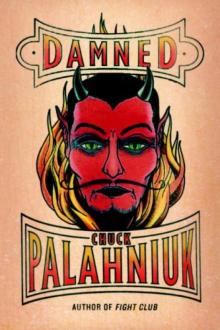 Damned
Damned Tell-All
Tell-All Choke
Choke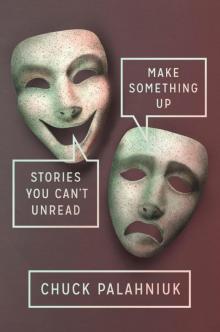 Make Something Up: Stories You Can't Unread
Make Something Up: Stories You Can't Unread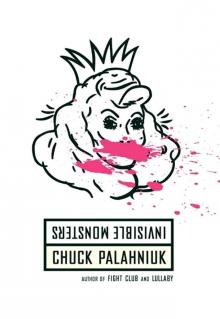 Invisible Monsters
Invisible Monsters Phoenix
Phoenix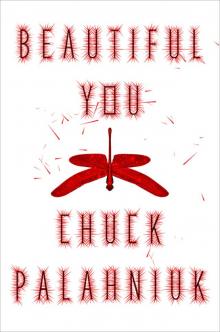 Beautiful You: A Novel
Beautiful You: A Novel Haunted
Haunted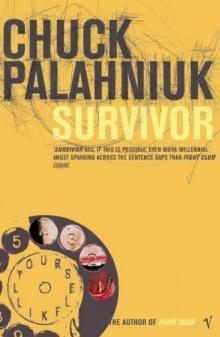 Survivor
Survivor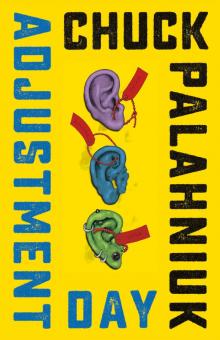 Adjustment Day
Adjustment Day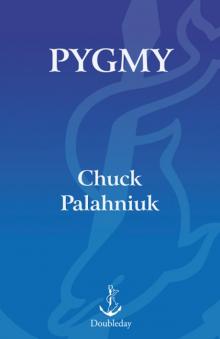 Pygmy
Pygmy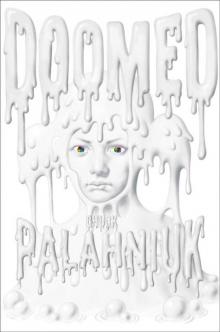 Doomed
Doomed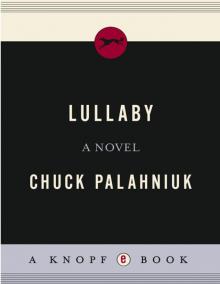 Lullaby
Lullaby Snuff
Snuff Burnt Tongues
Burnt Tongues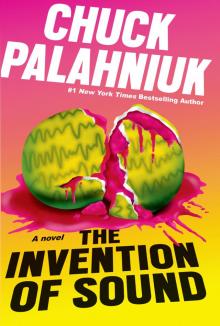 The Invention of Sound
The Invention of Sound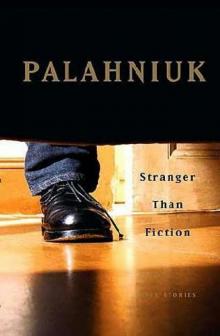 Stranger Than Fiction (True Stories)
Stranger Than Fiction (True Stories) Rant: The Oral History of Buster Casey
Rant: The Oral History of Buster Casey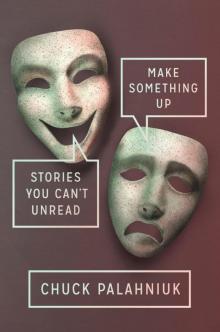 Make Something Up
Make Something Up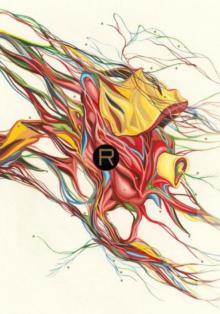 Rant: An Oral Biography of Buster Casey
Rant: An Oral Biography of Buster Casey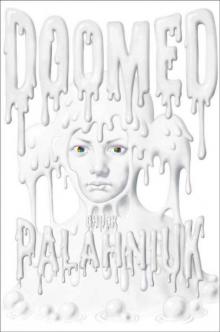 Doomed d-2
Doomed d-2 HOPE AND GORY
HOPE AND GORY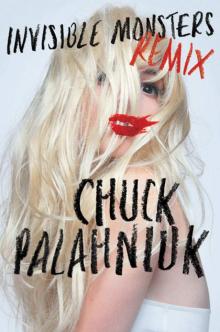 Invisible Monsters Remix
Invisible Monsters Remix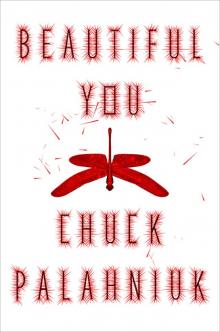 Beautiful You
Beautiful You Fugatives & Refugees
Fugatives & Refugees